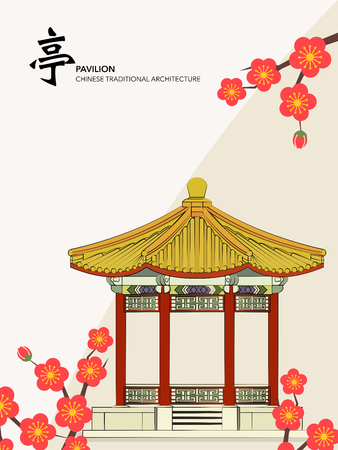Introduction to Feng Shui in the UK Interior Context
In recent years, the ancient Chinese art of Feng Shui has found a welcoming home within the United Kingdom’s diverse interior landscape. British homeowners, ever in search of harmony and balance, have embraced the core principles of Feng Shui—adapting them thoughtfully to suit the country’s rich architectural heritage and distinctive weathered palette. From Victorian terraces to Georgian townhouses and contemporary flats, the subtle interplay between energy flow, colour psychology, and elemental design is increasingly influencing how spaces are conceived and lived in. Rather than imposing strict Eastern aesthetics, UK designers and residents alike are reinterpreting Feng Shui concepts through a uniquely British lens: earthy tones reminiscent of rolling moors, soft greys inspired by coastal skies, and tactile materials that echo centuries-old stonework. This gentle fusion creates interiors where wellbeing meets tradition, and where thoughtful colour choices and elemental accents breathe new vitality into storied spaces across the nation.
2. Using Colour to Channel Energy: UK Homes Embracing Feng Shui Palettes
Across the UK, homeowners are increasingly looking to Feng Shui for inspiration when choosing colour schemes that foster harmony and flow within their interiors. By blending this ancient Eastern philosophy with quintessentially British tastes, remarkable transformations are taking place in living rooms, kitchens, and bedrooms—each reflecting a distinct balance of tradition and modernity.
Real-life Transformations: From Stately Homes to Cosy Terraces
In a Victorian terrace in Manchester, the once-muted living room received a rejuvenating update by introducing deep green and soft gold accents. These shades, rooted in the Wood and Metal elements of Feng Shui, not only revitalised the space but also echoed the leafy parks visible from its sash windows. Meanwhile, in a Brighton townhouse kitchen, navy blue units paired with white quartz worktops channelled Water and Metal elements, reflecting both seaside serenity and sleek contemporary British design.
Balancing Tradition with Contemporary British Style
Feng Shui colours can seamlessly blend with beloved British motifs such as heritage wallpapers or classic herringbone flooring. In a Cotswolds cottage bedroom, blush pinks (Fire) were layered with calming greys (Earth) to create a restful sanctuary—bridging country charm with subtle Eastern symbolism. The result is a space that feels both familiar and gently energising.
Examples of Feng Shui Colour Application in UK Rooms
| Room Type | Feng Shui Element | Colour Palette | British Design Integration |
|---|---|---|---|
| Living Room | Wood & Metal | Moss Green, Gold Accents | Victorian Fireplace Mantels, Bay Windows |
| Kitchen | Water & Metal | Navy Blue, Crisp White | Nautical Touches, Shaker Cabinets |
| Bedroom | Fire & Earth | Blush Pink, Soft Grey | Countryside Patterns, Oak Beams |
This thoughtful approach ensures each interior speaks to both the energy needs of its inhabitants and the aesthetic heart of British home life. Whether you live in a London flat or a rural retreat, channelling energy through colour can lead to spaces that feel not only beautiful but truly balanced.

3. Blending the Five Elements with British Architecture
Integrating the five Feng Shui elements—wood, fire, earth, metal, and water—into quintessential British interiors requires both creative flair and cultural sensitivity. Across the UK, from Edwardian terraces to sleek city flats, designers are achieving harmonious spaces by thoughtfully weaving these elements into traditional and modern settings alike.
Edwardian Terraces: Honouring Heritage with Wood and Earth
A London-based case study highlights an Edwardian terrace where oak flooring and walnut bookshelves (wood) were paired with natural stone hearths (earth). The restoration respected period features while introducing olive-toned walls to foster a nurturing atmosphere. Brass door handles (metal) provided subtle contrast, while a classic slate-tiled hallway (water) grounded the entryway in calm sophistication.
Modern City Flats: A Contemporary Take on the Five Elements
In Manchester, a contemporary flat was transformed using bold fire element accents—such as vibrant scarlet cushions and curated artwork—to energise an otherwise neutral palette. Sleek chrome lighting fixtures (metal) introduced clarity and precision, while indoor planters filled with ferns (wood) softened sharp architectural lines. Earthy ceramics offered tactile warmth on open shelving, and a glass feature wall reflected the water element, amplifying natural light throughout the space.
Creative Layering for British Living
These real-life case studies demonstrate how layering Feng Shui’s elemental principles within British architecture is not about following rigid formulas but about enhancing each property’s unique character. Whether in a Victorian semi or a new-build penthouse, blending wood for growth, fire for vibrancy, earth for stability, metal for clarity, and water for flow can transform everyday living spaces into balanced sanctuaries tailored for modern UK lifestyles.
4. Overcoming UK-Specific Challenges: Light, Layout, and Weather
One of the most remarkable aspects of applying Feng Shui principles in British interiors lies in adapting ancient Eastern wisdom to the unique demands of UK homes. With their often overcast skies, compact Victorian terraces, and rooms shaped by historic architecture, homeowners have become adept at tailoring Feng Shui elements to suit their environment. Below is an exploration of how these challenges are met:
Adapting to Limited Daylight
British winters can feel long and gloomy, with north-facing properties receiving even less natural light. To counteract this, many homeowners incorporate the Fire element through warm colours such as ochre, deep orange, or soft gold on accent walls or furnishings. Mirrors are strategically placed opposite windows to bounce available light deeper into rooms, while metallic accessories (Metal element) amplify brightness without overwhelming traditional décor.
Weather-Proofing with Feng Shui Elements
Rainy days are a British staple, which means moisture-resistant materials and clever use of the Water element are essential. Homeowners often introduce blue or teal hues in entryways to encourage a calm flow of energy and reduce the psychological impact of grey weather. Plants (Wood element), especially those thriving in low light, not only purify the air but also bring vitality indoors during prolonged rainy spells.
Case Study Table: Tailoring Feng Shui Solutions for UK Homes
| Challenge | Feng Shui Solution | Example from UK Homeowners |
|---|---|---|
| Limited Daylight | Add Fire/Metal elements; use mirrors; warm accent colours | Victorian semi uses copper lamp bases and mustard yellow throws in living room |
| Rainy Weather | Introduce Water/Wood elements; moisture-resistant décor; indoor plants | Bristol terrace with navy hallway runner and peace lilies near entrance |
| Unusual Room Layouts | Zone spaces with rugs (Earth); arrange furniture for smooth Chi flow | Edinburgh flat with circular jute rug defining dining area in open-plan kitchen/lounge |
| North-Facing Rooms | Use brighter Fire tones; enhance lighting with layered lamps; add reflective surfaces | Cotswolds cottage bedroom painted in terracotta with mirrored bedside tables |
Aesthetic Harmony Meets Practicality
The beauty of British Feng Shui interiors is how solutions blend visual comfort with practical needs. By honouring both cultural heritage and local conditions—whether thats maximising precious sunlight or creating inviting sanctuaries on a rainy afternoon—homeowners demonstrate that harmony truly thrives where design meets daily life.
5. Personal Reflections: Homeowners’ Perspectives on Energy and Well-being
Real transformation is best measured through the voices of those who live within newly balanced spaces. Across the UK, homeowners have begun to embrace Feng Shui’s guiding principles, integrating colour palettes and elemental accents to foster environments that feel both inviting and energising. Their personal accounts reveal a tapestry of positive experiences, from subtle shifts in daily mood to profound changes in overall well-being.
Rediscovering Comfort Through Colour
For many residents, the introduction of harmonious colours has redefined their sense of home. Claire from Bristol shares, “We added soft blues and gentle greens to our living room, inspired by Feng Shui’s Wood element. The space instantly felt calmer, making evenings at home more relaxing for the whole family.” This sentiment echoes throughout households where previously overlooked rooms now radiate warmth and serenity simply through mindful colour choices.
Luck and Opportunity: Subtle Shifts with Significant Impact
Some UK homeowners note improvements not only in comfort but also in perceived fortune. James, a London flat owner, recounts, “After incorporating red accents and metallic décor in line with Feng Shui advice, I started to notice more opportunities at work and an uplift in my confidence.” While such effects are subjective, it’s clear that the intentional arrangement of elements can influence one’s outlook and openness to new prospects.
Fostering Positivity and Connection
The ripple effect of these changes often extends beyond individual well-being. Emma from Manchester reflects on how introducing Earth tones into her kitchen encouraged more frequent family gatherings: “It feels warmer and more inviting. We find ourselves lingering over meals together.” Such stories highlight how Feng Shui adjustments support stronger connections and shared happiness within households.
Everyday Joys in British Homes
Ultimately, these first-hand experiences underline a simple truth: thoughtful interior design—anchored in time-honoured Feng Shui wisdom—enriches everyday living. By adapting colours and elements to suit both the UK’s architectural character and personal tastes, residents discover renewed energy, positivity, and a true sense of belonging in their homes.
6. Expert Insights: British Feng Shui Consultants Weigh In
To provide a truly authentic perspective on integrating Feng Shui into UK interiors, we turned to several seasoned British Feng Shui consultants for their insights. Their expertise highlights the importance of translating ancient principles into practical solutions tailored to British architecture, culture, and everyday living.
Understanding the British Context
“The charm of a Victorian terrace or the character of a Georgian townhouse can absolutely benefit from Feng Shui,” says London-based consultant Amelia Wright. She emphasises that while traditional Chinese elements are foundational, sensitivity to local materials and period features is crucial. “Don’t fight the bones of your home—work with them,” she advises.
Adapting Colours and Elements
Manchester practitioner Oliver Grant notes, “British homes often have smaller rooms and less natural light compared to Asian counterparts. Choosing lighter tones from the Five Elements palette—soft greens for Wood, gentle creams for Earth—can open up spaces while respecting original details.” He also suggests introducing Water elements subtly through glass decor or artwork featuring British riverscapes for authenticity.
Practical Tips for Lasting Impact
For those keen to harmonise their interiors, consultant Priya Patel recommends starting with the entrance: “The front door sets the tone in Feng Shui. A freshly painted door in an auspicious colour that complements your brickwork can attract positive energy without clashing with neighbourhood aesthetics.” She also highlights integrating plants native to the UK as Wood elements, promoting both wellbeing and ecological harmony.
Bridging Tradition and Modern Living
All experts agree on one key point: successful Feng Shui in Britain is about balance rather than wholesale transformation. “It’s not about turning your home into a pagoda,” says Wright. “It’s about subtle shifts—thoughtful placement of mirrors to reflect garden views, or using textiles in Fire colours like deep reds and oranges to add warmth during long winters.” This approach ensures that ancient wisdom enhances comfort and style for modern British lifestyles.


